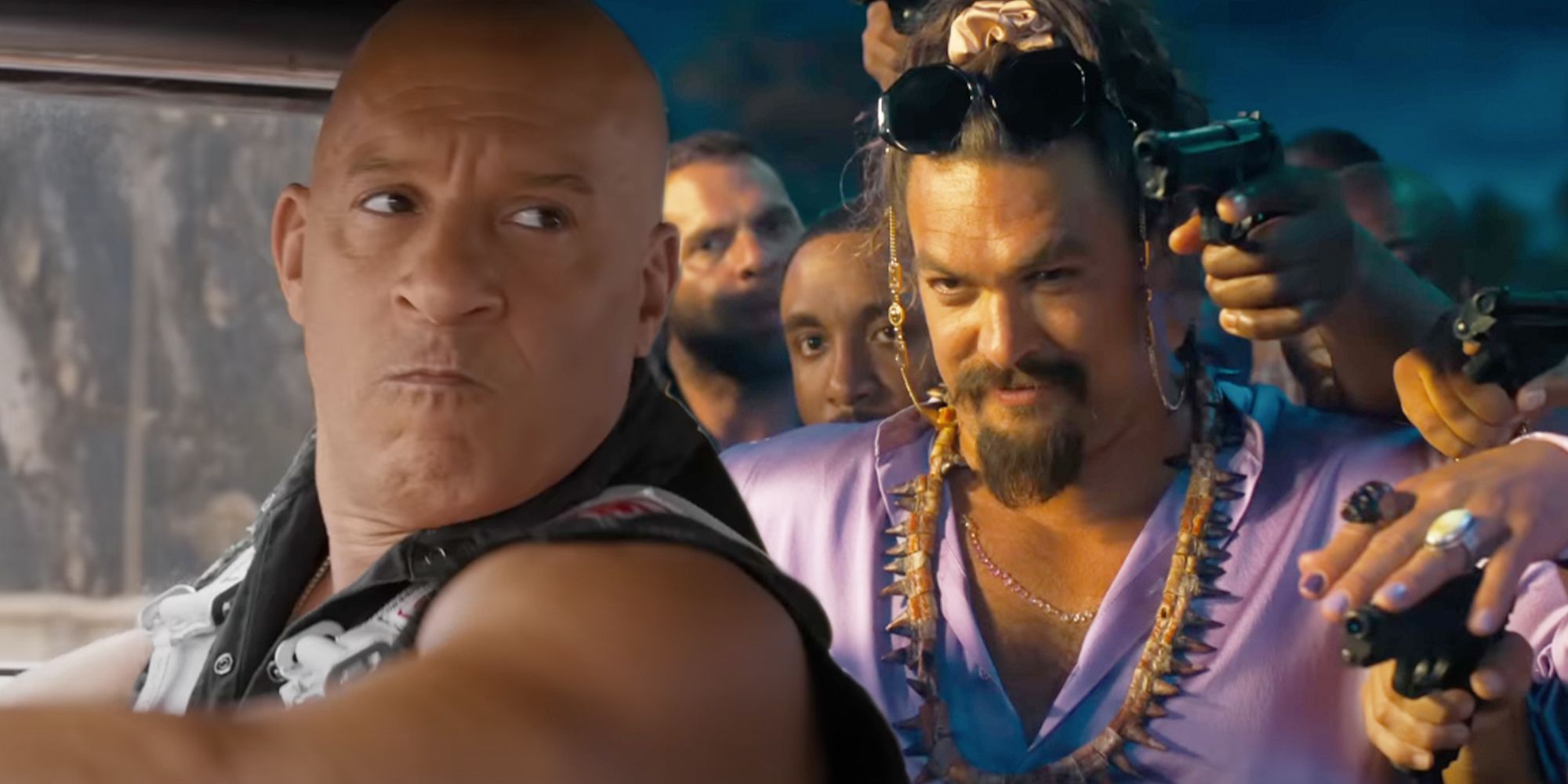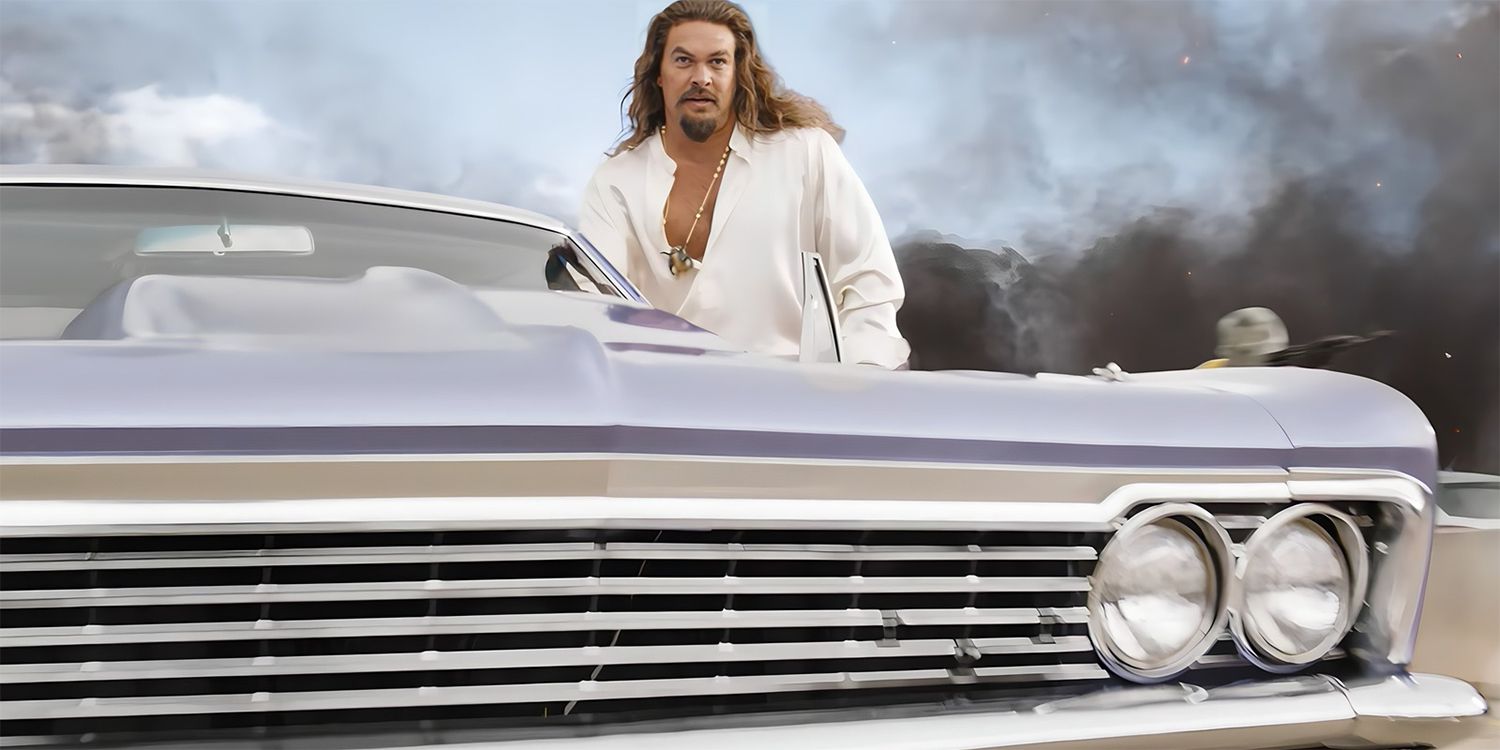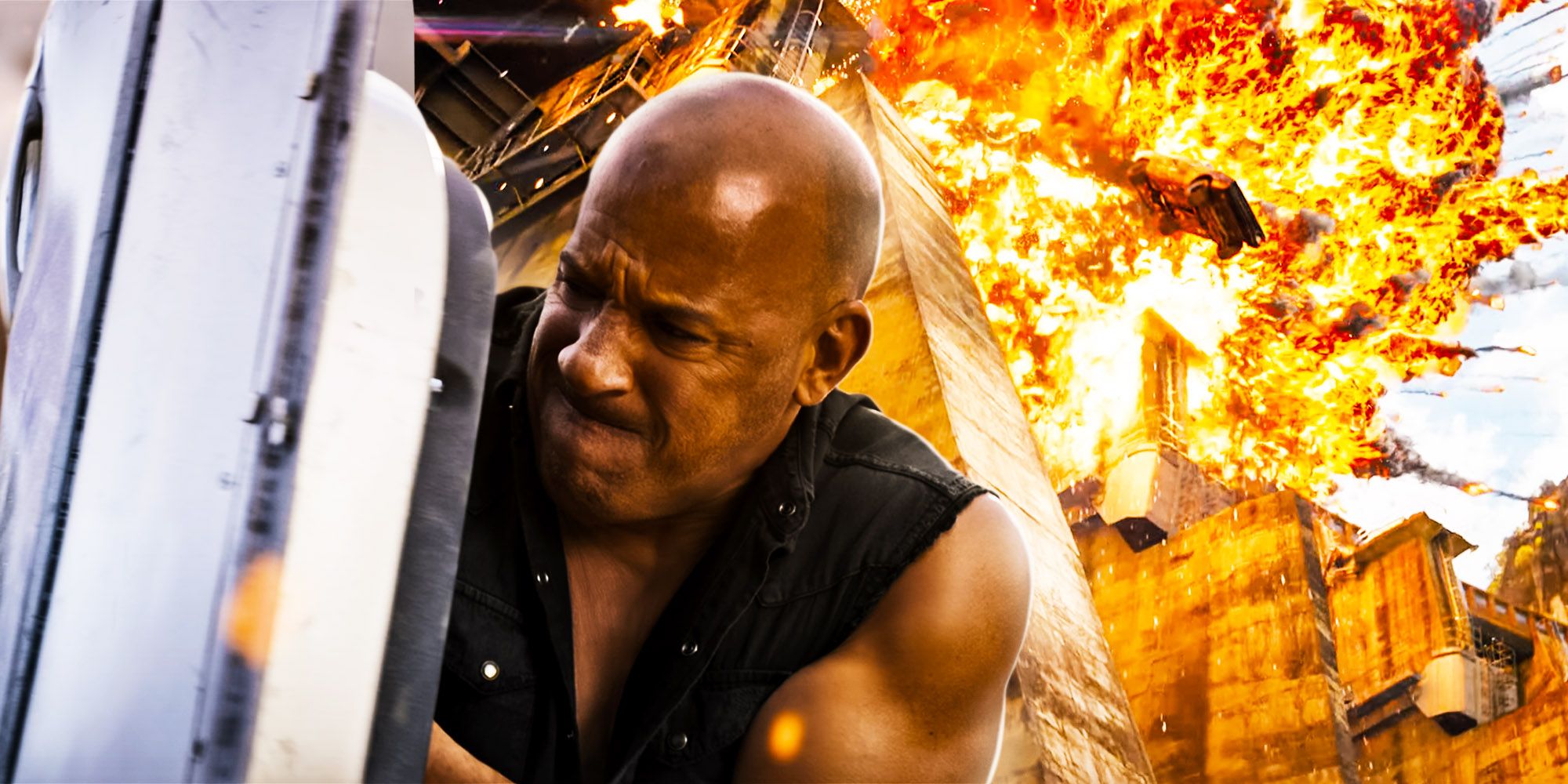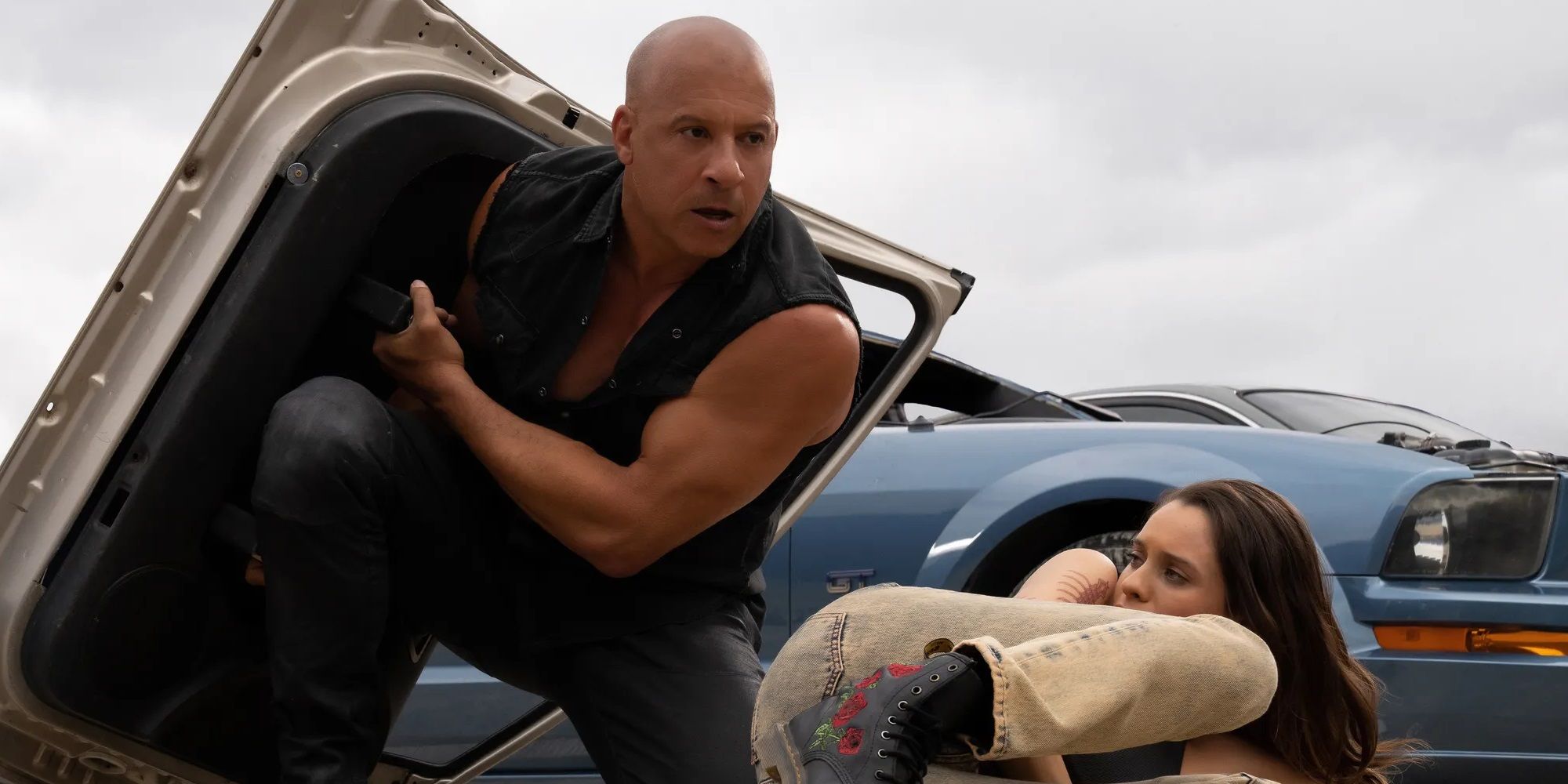The Fast & Furious franchise is coming to a (prolonged) close starting with Fast X. The tenth installment in the long-running franchise is the beginning of the end for the core Fast family, and fittingly pulls out all the stops in the process. What’s more, even as the franchise speeds toward the finish line, it has introduced one of its best-ever villains in Jason Momoa’s Dante.
Of course, the Fast & Furious franchise is ultimately about family both on-screen and behind the scenes. Much of the creative team behind Fast X has worked on previous films in the saga, and composer Brian Tyler is no exception. Fresh off his masterful score for The Super Mario Bros. Movie, Tyler has created a bombastic score for Fast X that also adds fresh and new musical elements that fit perfectly with what has come before. Tyler’s score will be released as an album on June 2nd, but until then, it can be enjoyed in the movie itself.
Brian Tyler spoke with Screen Rant about being inspired by Jason Momoa’s performance, crafting the perfect music for one of the film’s biggest action sequences, and more. Note: This interview has been lightly edited for length and clarity.
Brian Tyler on Fast X
Screen Rant: I saw a video of you from years ago where you went through how you did a cue for Fast & Furious. You were talking about laying down the band instruments like drums, bass, and guitar, and then building in the orchestra after. Has your process changed over the years at all?
Brian Tyler: Yes and no. This one is quite different. I can’t wait for you to get the score on its own, which we’re mastering right now. It’s out June 2nd. The approach was similar in terms of the order of things. The first thing I did on this one was that from the script, and from talking to people early on, and then as Louie came on board and started to shoot, I started to write music. Once I saw Jason Momoa’s performance, it was like, “There are all these characters. I’m going to write this suite that’s away from picture.” I did it all myself, including doing sampled strings. I played some strings and cello and drums and bass, and then add 808s. Then I’d go in and start programming and doing production.
Part of the sound is that I’m a music producer. I’ve had two careers; I do bass music and hip-hop and produce music with Rae Sremmurd and Wiz Khalifa, and collaborate with them, and even toured as an artist as Madsonik. It’s this whole other world, and in Fast and Furious, especially on this one, that is really forefront. It’s crazy, crazy production, from drum and bass to hip-hop, to everything in between. There are elements of electronic music, but also live musicianship and ear candy. It’s this wild sound. I was always really into that, but since the last Fast and Furious, it’s been a few years of hardcore working on my project Are We Dreaming, which is kind of like a new wave of production. That was an element that I wanted to bring into this Fast, and at the same time it had these themes and orchestral things, so I started layering. I’d have over 300 tracks and different little things in one song. I’m using the Z axis, where sound goes not just up, down, left, and right, but forward and back. It uses all this psycho-acoustic brain trickery to make you think you hear things behind your head. It’s insane. If you put on headphones with this soundtrack, you’re in for a treat.
As a precursor to what I’m about to say, the Fast and Furious movies started as racing movies. Musically, it was more just the energy thing, and it wasn’t as thematic. Then, by the time we got to Fast Five, all of a sudden the structure of the movies became more epic. There’s family, and there’s love, loss, tragedy, and all these things, and all of a sudden, I was writing leitmotifs and themes. Even though that music is a modern hybrid sound, the essence of the structure is almost more like a Star Wars or Lord of the Rings, where you have themes for people. As the movies have gone by, and you introduce Jason Statham’s character Deckard, and Kurt Russell’s character Mr. Nobody, and Hobbs played by Dwayne Johnson, all the characters have themes. Now you’re talking about over a dozen main themes by the time we’re in this movie. It’s almost an unheard-of amount of character themes at this point.
So, here comes a new character, right? Here comes Jason Momoa. You go back to Fast Five, to the heist in Rio, at the beginning, and you’re seeing this amazing sequence from another perspective; you’re seeing it from the villain’s perspective. The cool thing about that is that it creates empathy for the villain. He’s not just a mindless, “I am going to nuke the planet” kind of villain. You get it. Villain themes are often kind of relegated to, like, “Whatever, just make it dark.” People tend to, in film compositions, go lower and lower and lower, and get really dirge-y. That’s not this. I think he’s the best kind of villain. He’s charming, and you have a kind of sympathy for him. He’s evil and intelligent.
We’re talking about how this started, and the suite that I wrote; it starts with Dante. It starts on violins, and it’s really snaky. The notes bend. Then there’s harp–elegant, sophisticated, charming. He’s attractive. You want to look at him. You want to have a drink with him and have him tell you a story. Villains that are human beings, I think, are best when they’re humanized. That music had to do that, and it grows out of this character. It’s building, and building, and the strings are coming in, and all of a sudden you have this modern electronic production that borrows from the most sound-design-y bass music, but with the higher orchestra. It’s kind of like he’s charming you and seducing you.
The third chord in his theme is wrong. It’s such an ‘out’ chord. It shows that he’s disjointed, and he’s fractured. It keeps on building, and shorter strings come in showing precision, and that he’s intellectual, and he can calculate how he’s going to **** you up.
Something that really stood out to me in watching the movie was the whole Rome sequence. It’s, like, a 10-minute action sequence, and there’s music the whole time. How do you keep the music building for that long?
Brian Tyler: It’s funny because Dante’s theme comes in there, and so does the Fast and Furious team theme. But when it’s the Fast team theme, it’s from the perspective of them getting their asses kicked. It’s negative, but this really, for me, musically satisfying sense of danger. It feels dangerous, and you’re dealing with major threats.
There are a couple of things I did. I was doing Dante’s theme, but really assertively. I was inverting what used to be called the devil’s interval which, back in the day, the Catholic Church in Rome banned. You weren’t allowed to do this interval, and that’s part of Dante’s theme; the devil’s interval in reverse. So that’s going on, and the tempo is building, and I slowly add in things. One of the things I did that I’ve never done in any Fast and Furious movie is use choir, so all of a sudden, you realize you’re in a nuclear scale. The scale of everything becomes much bigger, with much more peril and emotion.
Also, something that I do is something I call a shepherd tempo. There’s something called a shepherd tone, which is a note that loops around itself and always sounds like it’s going upward. There’s a thing that happens where if you ramp up too slowly in tempo, there’s this thing that happens where you don’t notice it, and so it’s useless. What would happen is that people in both film scoring and in DJing would, I think, make a mistake. They would set a start point tempo and an end point tempo and, no matter how long it was, just 45-degree angle up to it. The problem with that is, if it’s over a certain amount of time, you just don’t feel it. It doesn’t feel like it’s getting more exciting.
What I do is I’m like, “What’s going to happen if I throw out that rule?” and I just do it where I speed up and ramp up naturally. I learned this, actually, from Fast and Furious, because sometimes there are 19-minute action sequences, and DJing. I saw it work in person. I would do gig after gig, and I would do this psycho-acoustic illusion, which is that I would ramp up the tempo, and it would hit a peak, and then I would do some kind of polyrhythm against it. All of a sudden a tempo would come in that would be a tuplet, or a two-thirds tempo, and because it’s so weird against the other tempo, it sounds faster, but you’re going only 66% as fast. Now I’ve slowed way back down, and I have all this ramp again.
So I’m doing that throughout the sequence you’re asking about. It kind of continuously feels like you’re getting more intense. Then, I do actually hit the choir. In the end, I kind of go into halftime, and it just feels like that mosh pit kind of tempo, but with choir and orchestra. Everything’s on eleven right at the peak, and that feels kind of like that mic drop situation, almost like that’s the end of a concert, but with film scoring.
I appreciated the little Swan Lake nod. Where’d that come from?
Brian Tyler: Yeah, “Weird choice, Brian.” So, there’s a part where he says how much he loves opera, and I’m like, “Why not bring in some Tchaikovsky?” It sounds kind of weird; it sounds darker than Swan Lake, but it is Swan Lake. It’s a very beautiful melody. Funny enough, we already mentioned this; there are certain things that weren’t allowed in music. What I’m doing is the melody of Swan Lake, but done really low. It’s lower, but at the same time, the chords and some of the intervals are kind of banned chords Tchaikovsky wasn’t allowed to use. It makes it feel off, and kind of epic. It comes at a moment–no spoilers, but it’s a big moment. The idea was just to reference him, but do it kind of from his perspective. It’s almost like what Swan Lake would be in how he hears it in his mind.
Fast X is now going to be a trilogy, I think, but as someone who has had the Fast movies in his life for so long, have you started thinking about the end yet? How’s that been for you?
Brian Tyler: I was telling you about when I was writing that suite; I’m even thinking ahead. Some of that is actually a musical backdrop for a character that is only in it for so long. I’m even writing now, already, for things that are coming. I love being involved on the ground level, and really being a part of the filmmaking crew. I started working on Fast and Furious–my music is in the first Fast and Furious, as a matter of fact, so in terms of association with Fast and Furious, this is already 22 years.
The number of people that are still around is cool. We’re like, “We’ve been through it,” and we can’t tell you how many times we’ve told, “That’s not going to work.” “No, it’s done.” 2006–“No.” 2007–“It’s over. No more Fast.” I see it still sometimes, like, “Oh, they’re doing two more. I don’t know.” We’re used to it, and it’s a camaraderie now where we believe in it and we’ve grown together as a family.
Also, just from a composer’s perspective, this is one of the most challenging scores you can do. In a way, it has its foot in traditionalism where I have to write themes that really, really can stick with you in a way that’s architecturally like a John Williams type of score, but with orchestra and the most crazy, intensely, sonically-detailed production. I produce and mix all the scores; I won’t let anyone go there. As I’ve grown as a music producer, it has gotten more and more rich in that area, but in terms of doing something like this just as a challenging feat, it is beyond imagination. I’m really proud of it, and I’m looking forward to how this finale is going to line up. I think people are really going to be blown away.
About Fast X
Dominic Toretto must protect his family from a new threat with ties to his past. Dante Reyes, son of Hernan Reyes from Fast Five, seeks revenge against Dominic for the loss of his family fortune and the death of his father. Dominic must pull his family together to protect each other from the most volatile threat they’ve faced yet.
Check out our other Fast X interviews:
Fast X is in theaters now, and the original soundtrack will be released on June 2.




